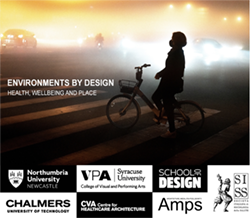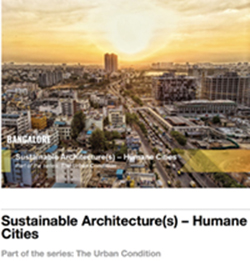ISSN (online): 2075-5309
Call of the Journal:
- Advanced Concrete Materials in Construction
- Advanced Methods for Structural Rehabilitation
- Advances in Civil Engineering Materials: Design, Characterization, Corrosion and Durability
- Climate Resilient Buildings
- Computer Aided Architectural Design
- Innovations in Building Integrated Photovoltaic Systems
- Managing Innovation and Innovation Risks in Construction Projects
- New Approaches to Modelling Occupant Comfort
- Performance-Based Design of Buildings
- Protection of Buildings with Historic, Architectural or Cultural Value
- Recent Advances in Design, Construction, and Maintenance of Buildings
- Seismic Performance Assessment of Buildings
- Seismic Safety Assessment of Existing Constructions
- Structural Dynamics and Analysis of Civil Structures and Engineering Materials
- Sustainable and Green Construction Materials | Opportunities for New and Existing Structures
- Sustainable Concrete Construction | Methods and Practices
- The Architecture of Collective Housing
- Thermal Performance of Buildings and Building Components | Renewed Role, New Expectations, and Old Challenges
May
2021
Jun
2021
Since, more than 40% of the end-use energy and as much as 70% to 80% of electric energy consumption are caused by the building sector in different countries worldwide, energy-efficient buildings play an important role not only in local economies, but they also impact the global climate protection. Although buildings are the key driver of electricity demand, they can also be a part of the solution to peak demand issues, through special designs implementing high thermal performance envelopes, optimizing dynamic thermal response, as well as an application of thermal storage, new controls, and renewable power generation. Static and dynamic thermal processes in buildings and building components, together with associated thermal mass effects and thermal storage, play an equally important role in overall building energy efficiency, utilization of renewable energy sources, and also in energy demand management. Building enclosures, which include both fenestration and the opaque portions of the envelope, effectively control the influence of outdoor conditions on the interior environment, reducing the heating, cooling, and lighting requirements to maintain the desired indoor conditions. The above factors directly impact the corresponding energy use and its dynamics. It is becoming well-understood now that the current world population must significantly reduce the energy demand for operating buildings and then meet it with renewable energy sources to the greatest extent possible. This is exactly the topic where the newly-planned Special Issue: “Thermal Performance of Buildings and Building Components | Renewed Role, New Expectations, and Old Challenges” intends to make its contribution. With this note, we invite potential contributors to present your research and look forward to receiving exciting papers supporting the realization of this goal.
Keywords: Building energy efficiency; Performance analysis; Building science; Building materials; Energy storage; Building-integrated renewable energy sources.
Thermal Performance of Buildings and Building Components | Renewed Role, New Expectations, and Old Challenges
Since, more than 40% of the end-use energy and as much as 70% to 80% of electric energy consumption are caused by the building sector in different countries worldwide, energy-efficient buildings play an important role not only in local economies, but they also impact the global climate protection. Although buildings are the key driver of electricity demand, they can also be a part of the solution to peak demand issues, through special designs implementing high thermal performance envelopes, optimizing dynamic thermal response, as well as an application of thermal storage, new controls, and renewable power generation. Static and dynamic thermal processes in buildings and building components, together with associated thermal mass effects and thermal storage, play an equally important role in overall building energy efficiency, utilization of renewable energy sources, and also in energy demand management. Building enclosures, which include both fenestration and the opaque portions of the envelope, effectively control the influence of outdoor conditions on the interior environment, reducing the heating, cooling, and lighting requirements to maintain the desired indoor conditions. The above factors directly impact the corresponding energy use and its dynamics. It is becoming well-understood now that the current world population must significantly reduce the energy demand for operating buildings and then meet it with renewable energy sources to the greatest extent possible. This is exactly the topic where the newly-planned Special Issue: “Thermal Performance of Buildings and Building Components | Renewed Role, New Expectations, and Old Challenges” intends to make its contribution. With this note, we invite potential contributors to present your research and look forward to receiving exciting papers supporting the realization of this goal.
Keywords: Building energy efficiency; Performance analysis; Building science; Building materials; Energy storage; Building-integrated renewable energy sources.
Current Contents – Engineering, Computing & Technology (Clarivate Analytics), DOAJ, Genamics JournalSeek, Inspec (IET), Julkaisufoorumi Publication Forum (Federation of Finnish Learned Societies), Norwegian Register for Scientific Journals, Series and Publishers (NSD), Science Citation Index Expanded – Web of Science (Clarivate Analytics), Scopus (Elsevier), Web of Science (Clarivate Analytics), CLOCKSS (Digital Archive), e-Helvetica (Swiss National Library Digital Archive), Academic OneFile (Gale/Cengage Learning), EBSCOhost (EBSCO Publishing), Google Scholar, J-Gate (Informatics India), Materials Science & Engineering (ProQuest), METADEX/Metals Abstracts (ProQuest), ProQuest Central (ProQuest), Science In Context (Gale/Cengage Learning), WorldCat (OCLC).
Info at: www.mdpi.com/journal/buildings/apc
Guest Editor
Dr. Jan Kosny









